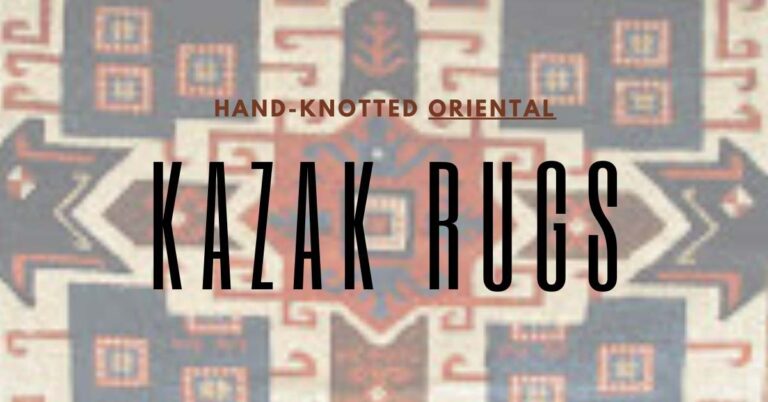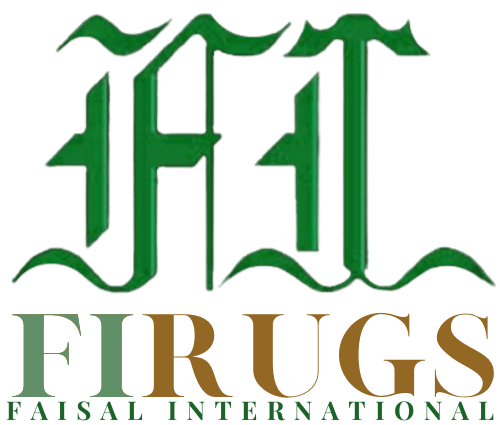
Table of Contents
Indian Super Kazak Rugs
Kazak Rugs History
Kazak area rugs are a kind of Armenian rug that was first hand-woven in the southern region of the Caucasus in the 1800s by a specific tribe.
The Indian rug weavers continue developing these fabulous traditional hand-knotted Caucasian rugs all by employing their same local materials. Super Kazak rugs made in Pakistan and India also make use of natural vegetable dye colors and Ghazni hand-spun wool for the same.
Super Kazak Rug Patterns
Indian Kazak rugs also use the same geometrical patterns that originate from the Kazak rugs that were made in the Caucasus. Therefore, Kazak area rugs geometrical patterns with or without numerous medallions
Look at its colors and pattern, the reason why they are so most loved. First, let us go with the design. The Kazak rug comes only with a geometric and not any other type of pattern. While some Kazak have medallions and borders, some of them are without a medallion or a corner/border. The borders of each one are sometimes about 1/4th of the medallion.
For fine Kazak rug prices, or samples contact FI Rugs right away, best price, and quality guaranteed.
Durability Of Kazak Oriental Rugs
Kazak Persian rugs and carpets are very durable, as they are wool made. They are a perfect rug type for high-foot traffic areas. The vegetable dye colors stick for a long time. The hand-spun wool is usually of long fibers that make it really strong. A good quality Kazak Persian carpet has dense and compact knotting which makes the rug durable.
Kazak Rug Symbols
Kazak runner rugs are some of the most versatile and luxurious area rugs for bed-sides, kitchens, entryways, and hallways.
Caucasian Kazak rugs highlight straightforward motifs/designs with tribal properties and geometric structures. Some common patterns include tribal designs, crosses, thorny lines, rosettes, medallions, diamonds, hooked polygons, and as well as depictions of humans, trees, reptiles, birds, and animals.
If you observe closely at a royal Kazak rug, you will find that these rugs are mostly embedded with straight lines in the name of patterns. Basically, this is all since it is entirely of the hand knotted method used to create them.
Antique Kazak Rug Colors
They use only vegetable dyes, and the wool that they use is the Ghazni wool. The wool is handspun, which means that the yarn is spun by the human hand rather than the machines.
A Kazak wool rug is made in size as small as 2’x3′ to size as large as 9’x12 and even larger.
There are usually three primary colors that you will get to see in Kazak tribal rugs. They are rusty red, dark blue, and cream colors. Also, they have unique contrasting colors, which usually include beige like this small Kazak rug right here, and teal and even indigo blue, and of course, rusty red.
These Kazak carpets feel somewhat thin, and this is because the piles that are cut shorter and stonewashed to wear the rugs even further. And that’s how they arrived at this beautiful finish.
Quality
These particular Kazak rugs have approximately 169 knots per square inch. The high knot density gives them a very sharp appearance and allows for more detailed design.
Take a peep at the rug’s back to read its knot density. You can think of the knot density like the megapixels on our television sets. The higher the pixels, the sharper the images.
These Kazak rugs are a bit lower at knot density at approximately 121 knots per square inch. They are also very durable and feel slightly heavier in comparison.
Kazak style rugs are a bit thicker and have a coarser view. Although they don’t have the high knot density, they are well worth their price and made with excellent quality.
These traditional area rugs are a perfect match for a dining room, a library, bedroom, and other areas to make a great impression.
Oriental Technique Wash
- Fixing of the color: The fundamental phase that guarantees the colors of your carpet is that it does not scatter during the wash. So immerse the rug in water thoroughly and wet it.
- Brushing and Cleaning: with neutral soap and a suitable brush, the carpet is carefully brushed in all its points, this phase is carried out by hand to vary pressure, intensity, and movement based on the characteristics of the carpet.
- Rinsing: By using specific tools, the carpet gets rinsed removing all soap residues from the inside of the rug.
- Wringing: With the aid of a roller, the carpet is wrung by further removing excess water from the carpet.
- Drying: Drying is preferably carried out in the sun to guarantee a brilliance to the colors of the carpet, moreover in the case of pets drying in the sun removes unpleasant odors that can remain on the rug.
